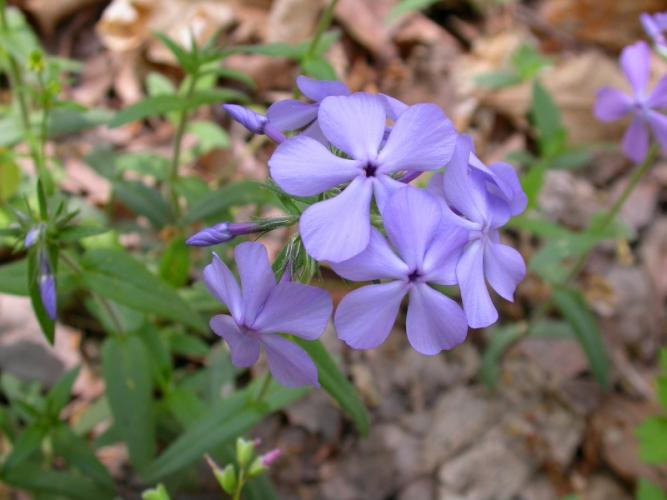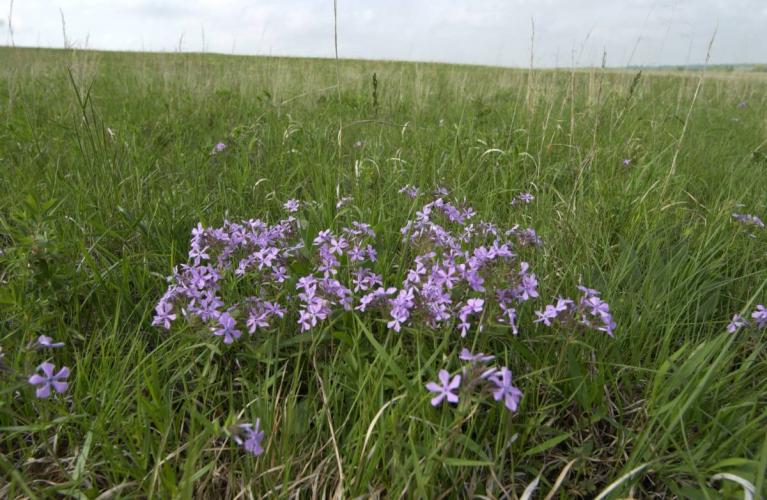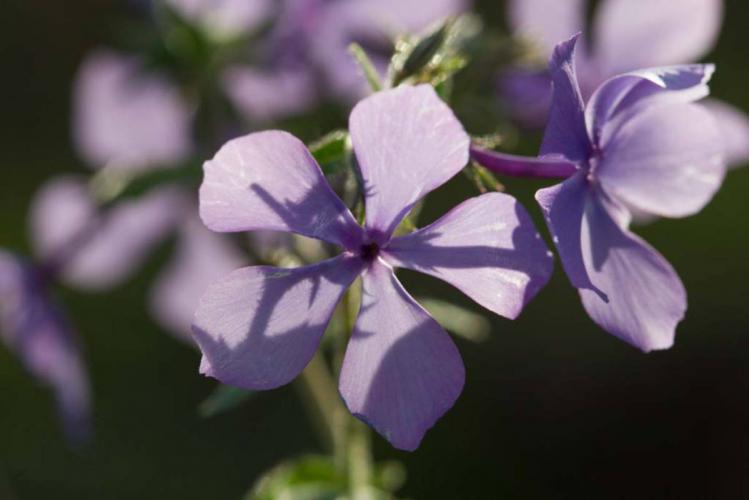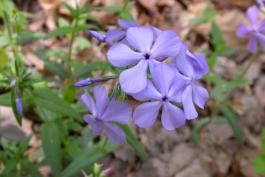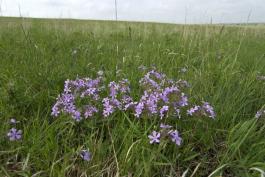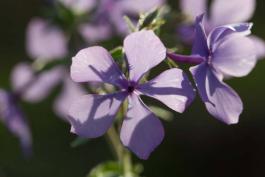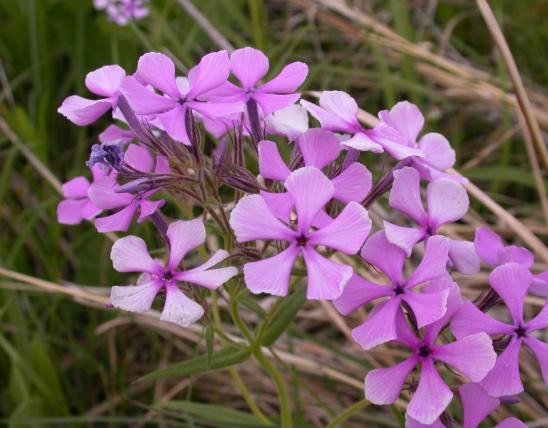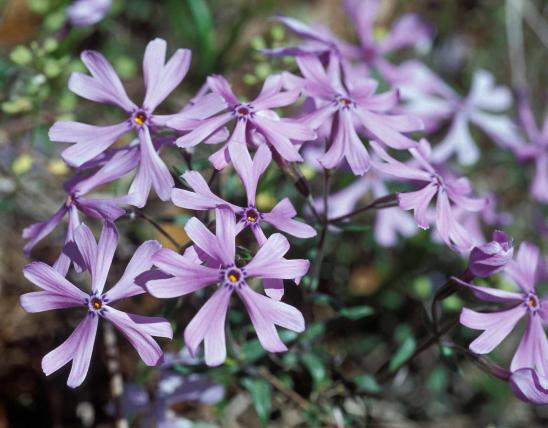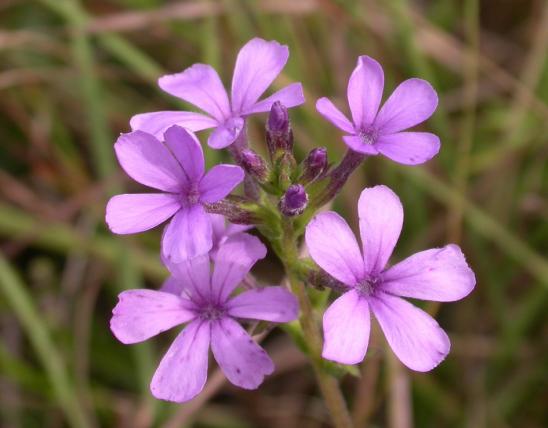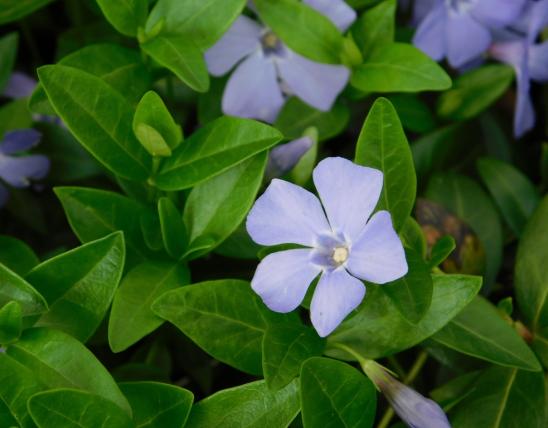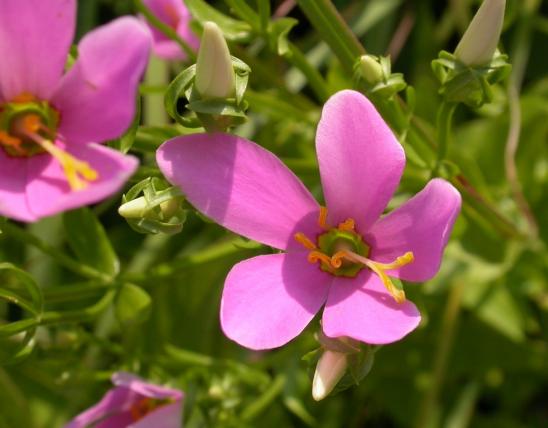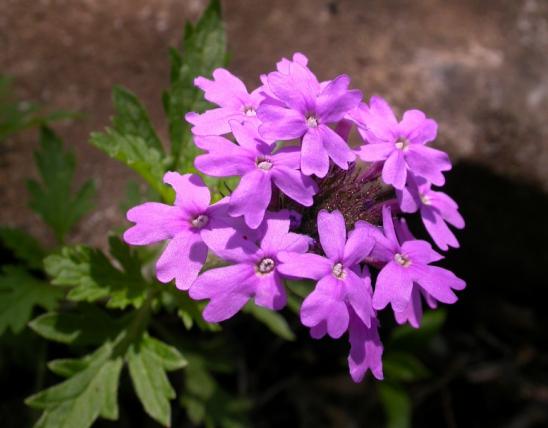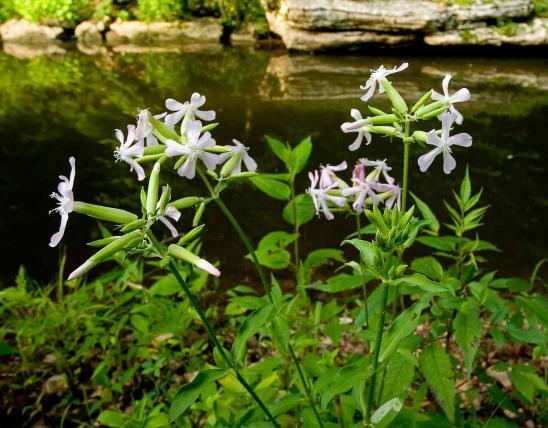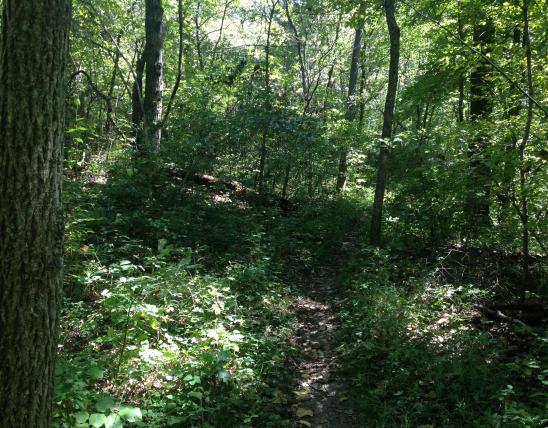
Blue phlox, also called wild sweet William, is a perennial wildflower with lance-shaped leaves and showy, rounded clusters of (usually) lavender flowers. The flowers are tubular with 5 lobes, the lobes spreading, somewhat heart-shaped, with or without fine notches, in varying colors: pale blue-purple, red-purple, rose-lavender, rarely white. Blooms April–June. The leaves are opposite, lance-shaped, spaced apart, to 2 inches long, finely hairy. Dark green, leafy shoots spread from base, take root, and persist through the winter.
Similar species: Nine species in genus Phlox are recorded growing wild in Missouri. Blue phlox (P. divaricata, the subject of this page) is one of the most common, especially in woodlands.
In our state, downy phlox, or prairie phlox (P. pilosa), is the species most likely to be confused with blue phlox. Its height and overall look are much like that of blue phlox, but here are some key differences:
- Blue phlox, as noted above, develops vegetative stems (in addition to flowering stems) that spread outward, take root at the nodes, and have rounder leaves different from the leaves of the flowering stem; meanwhile, downy/prairie phlox only rarely has such stems (and when it does, the stems are upright, and the leaves are not much different from those of the flowering stems).
- Downy phlox usually has the tubular, basal part of the petals hairy (downy) on the outer surface, while the tube-shaped part of blue phlox lacks hairs on the outer surface.
- Like blue phlox, downy phlox is scattered to common nearly statewide, but it is more common in sunnier, drier habitats such as prairies, glades, and dry upland woods.
Height: to 1 foot.
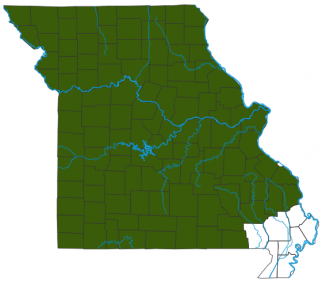
Statewide, except for the southeast lowlands.
Habitat and Conservation
Occurs in rich or rocky soils in open woods, thickets, wet streamsides, bottomlands, usually in partial or full shade, but sometimes in full sun. A native to much of the eastern United States, blue phlox is also found in cultivation, and some forms have been created just for gardening.
Human Connections
Blue phlox does well in wildflower gardens, thriving in shade or part-shade, in rich soils. Be sure you get your plants from an ethical native-plant nursery; don't dig them from the wild.
Missouri's lovely spring wildflowers help create the scenic beauty that is a big part of our state's tourism. Wildflowers also contribute to our sense of well-being after a long winter.
Ecosystem Connections
Butterflies are attracted to this species of phlox, and in fact, only insects with long tongues can reach far enough down the flower tube to reach the nectar. Thus butterflies and skippers, moths (especially various sphinx moths), and long-tongued bees (such as bumble bees) are the principal pollinators. Blue phlox flowers must be cross-pollinated in order to produce viable seed, so this plant requires the help of insect pollinators to reproduce.
Several animals eat the plant, as well. These include rabbits and deer, which browse the foliage, but also insects. The caterpillars of the darker-spotted straw moth (Heliothis phloxiphaga) feed on the flowers and seeds of phlox plants. The caterpillars of a moth called the "olive arches" (Lacinipolia olivacea) are known to chew phlox leaves (plus the leaves of several other plants, too). The phlox plant bug (Lopidea davisi) sucks juices from the flowers and flower buds.
